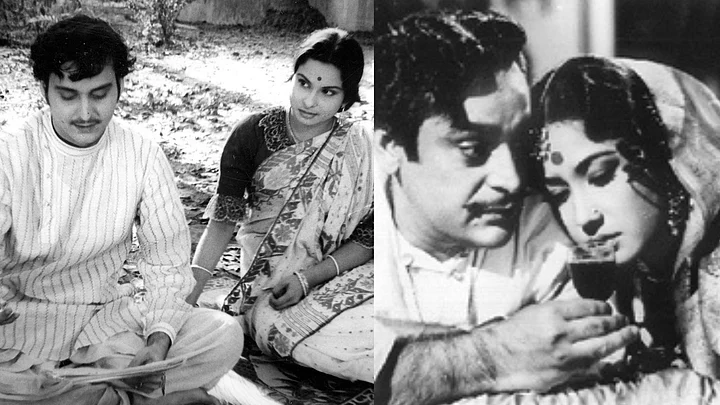“The British call us the idle rich. Do you think I am that?” a perturbed Bhupati Dutta asks his wife in the 1964 Bengali film Charulata, guilt-stricken for pursuing a passion that doesn’t bring in much money, i.e. publishing a crusading newspaper, sans sensationalism. His wife, Charulata, etched by the expressive Madhabi Mukherjee, assures him that his indulgence is no idle hobby. Directed by Satyajit Ray, Charulata is set in the late 1870s, a part of the exciting Renaissance period of Bengal.
Actor Sailen Mukherjee’s Bhupati Dutta epitomises the liberal Bengali elite, deeply influenced by the reformist movements of the time, like the Brahmo Samaj. Through his paper, The Sentinel, he raises important political questions, unafraid of being charged for sedition by the British; and fervently believes in the equality and upliftment of women. Based on Rabindranath Tagore’s novella Nashtanirh, Ray’s film has a rich intellectual, cultural and social background, founded by unorthodox individuals like Raja Ram Mohan Roy and the Nobel Laureate’s grandfather, Dwarkanath Tagore.
Interestingly, another film, set in around the same time, presents a diversely different world, peopled by, indeed, the idle rich of Bengal.
Guru Dutt’s 1962 Hindi film, Sahib Bibi Aur Ghulam, based on Bimal Mitra’s 1953 novel, and directed by Abrar Alvi, is, for most parts, dark and gloomy, depicting the degenerate lifestyle of the feudal, upper class, untouched by progressive reforms.
Suvinoy Babu, who is the face of social change in the film, is a minor character. The main plot revolves around the offensive, patriarchal Choudhury family, whose men spend their ill-earned wealth on pigeons, cats, dancing girls and alcohol. Their neglected wives are content playing cowri and breaking and making jewellery. Except one.
The youngest wife, Choti Bahu, who was advised by her mother to treat her husband as God and do his seva with body and soul, yearns for her husband’s companionship; and eventually emulates her husband’s favourite prostitute, by taking to the bottle and satisfying his carnal desires. Portrayed by Meena Kumari, Choti Bahu was lauded by film-buffs of the 1960s, who were deeply moved by the extent to which Choti Bahu went to win over her chauvinist husband. Today, her pleading and crying at her husband’s feet appear maudlin, and a pathetic portrait of womanhood.
Charulata, on the other hand, stands the test of time. You enjoy every frame of this artistically- constructed masterpiece, even today, because the values it upholds are egalitarian. Charulata’s husband, too, is unable to spend much time with her, busy as he is bringing out his revolutionary newspaper. But Charulata has an identity of her own and keeps herself occupied reading Bankim Chandra Chatterjee’s powerful, women-centric novels, embroidering handkerchiefs and running her beautifully-kept home. At mealtimes, she discusses current affairs and literature with her husband who values her opinion, and is also concerned about her lonesome hours. Troubled that his wife’s latent literary skills lie unexpressed, the large-hearted Bhupati asks his young cousin, Amal, to encourage Charulata to put quill to paper.
Ray’s film is an outward-looking one, literally and metaphorically. Unlike the closed, confining chambers in which Choti Bahu pines for her husband, the Dutta household is bright and airy, with windows opening out, on to the world outside. One of the early scenes in the film has the eponymous heroine amusing herself, looking at the ‘characters’ on the street below. Later, when she and Amal, played by Soumitra Chatterjee in one of his most memorable roles, recite poetry together, it is out in the sun-dappled garden. Her rising high on a swing is a charming metaphor for her mental soaring as she parries with Amal about what constitutes good writing…beautiful moments between two like-minded youngsters, that don’t invite censure. Even when she gets deeply attached to Amal, her husband does not castigate her. Though shattered, Bhupati introspects and you feel he holds himself equally at fault. So, when she stretches her hand out and says Esho (Come) he reaches out for her hand, in reconciliation.
On the other hand, Choti Bahu’s friendship with the simple-minded Bhootnath, a clerk at a sindoor factory, played by Guru Dutt, is cause for suspicion, and she is brutally murdered by her brother-in-law’s henchmen. Honour killing? What honour? The honour of this household revolves around the machismo of its men in brothels. In Charulata, the intellectual men who gather to celebrate the victory of the Labour Party in England, also raise a toast to Charulata’s debut as a writer.
The diverse worlds of these two films were ably designed by their respective art directors, and evocatively photographed by award-winning cinematographers.
Biren Nag’s ornate sets and V. K. Murthy’s lighting created the perfect ambience, in Sahib Bibi Aur Ghulam, for a claustrophobic story around a medieval mindset. Whereas Bansi Chandragupta furnished the Dutta mansion with bookcases, writing tables, a grand piano, Victorian-style wallpaper, in keeping with its Renaissance mood that was enhanced brilliantly by cinematographer Subrata Mitra.
If the two films reflect the diametrically different worlds that co-existed in the nineteenth century, they also reflect the very different sensibilities of two stalwarts of cinema, Satyajit Ray and Guru Dutt.
(At The Quint, we question everything. Play an active role in shaping our journalism by becoming a member today.)
